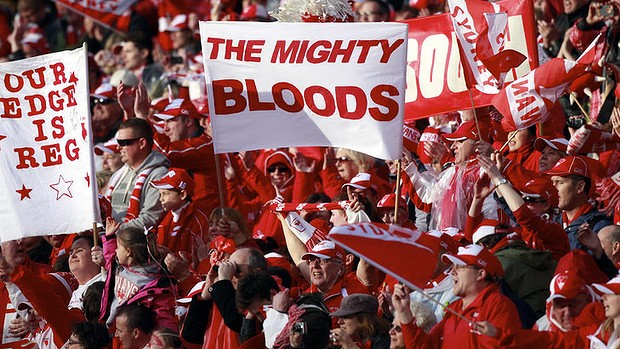oogac
Norm Smith Medallist
The "Maroons" ... it look like Fitzroy were ahead of the time.
Follow along with the video below to see how to install our site as a web app on your home screen.
Note: This feature may not be available in some browsers.
No. It would have been in the Club's annual report.
The name may have been bestowed unofficially before then (like the Swans unofficially were known as "the Bloods", which was seized upon by the media, supporters and even the players themselves.) However the official club history commissioned by the club in 1983 says "the Gorilla" was officially adopted in 1939 at Cecil Raphael's suggestion.
This "smoke" is referred to in the Argus at page 24 of the 8 October 1937 edition. Indeed Raphael attended this meeting in his capacity of then medical officer and made some inspirational comments.Well I have another to cat to throw amongst the pigeons.
The Argus of 9 October 1937 at page 15 says:
" Last football season the Fitzroy footballers were given a new name -they were called "Gorillas". When I attended a smoke ( a social function of the time) on Thursday night, I was handed a souvenir to pin in my lapel. It was a peanut coloured maroon and blue with paper wings of the same colour scheme"
Further evidence.
In the Examiner of Launceston of 23 July 1938 at page 12, it was said "Fitzroy "Gorilla" Badges were popular in Tasmania when the team was in Hobart. The manager of the team (Mr P Mitchell) took 600 "gorillas" with him and was inundated with demand for the badges.
This was also set out and confirmed in the Argus of 22 July 1938 at page 17.
The official Fitzroy history was written for the hundredth anniversary of Fitzroy in 1983 and published by the Club for that occasion. Only 800 copies were printed (200 a "Deluxe" leather bound edition) I have one of them.
One for every member?
The "Maroons" ... it look like Fitzroy were ahead of the time.
Roylion - be wary of accepting something as gospel because it's in an "official club history", or any of the footy history books published over the years.
Much of what we've accepted as fact is based on hearsay, memories and anecdotes of past players/officials, plus historians with limited resources to check the veracity of such claims. If it ended up in print it became the truth.
Re: the Gorillas - not one source from that era mentions anything about a change to Gorillas occurring in 1939. However, numerous sources from 1937-38 refer to the change occurring in 1937. The evidence clearly points to the club being re-badged in 1937, not 1939 as stated in the official history.

[/QUOTE]Having studied and taught history for the last thirty years I'm aware of how history is written. I also understand very well how history can change with the provision of recently discovered / re-examined sources.
Re-badged by who. The supporters? The players? One committeeman? The Swans are also known by many of their supporter base and indeed by some of the general public as the "Bloods". (such as the picture below) This however is by no means official.

There many have been some move by some sections of the Fitzroy supporter base to re-badge the club with a fierce mascot rather than a colour. However that does necessarily mean that this was officially done in 1937 or 1938. All I'm saying is that the official Club history says the Gorilla moniker was officially adopted by the club in 1939. I'll look up some old annual reports and see if this can be verified.
You make a fair point. But when the team goes to Tasmania to play a game with Essendon down there, accompanied by Raphael and Pearce, both senior club officials and then distribute 600 badges of "Gorillas" to Tasmanian supporters, then it is significant.
Gorilla Badges for Fitzroy were still being marketed into the 1950s - see The Argus of 12 July 1950 at page 11 where a Fitzroy Gorilla Badge was sent to a US servicemen in Korea because it resembled a US servicemen's grid iron team.
